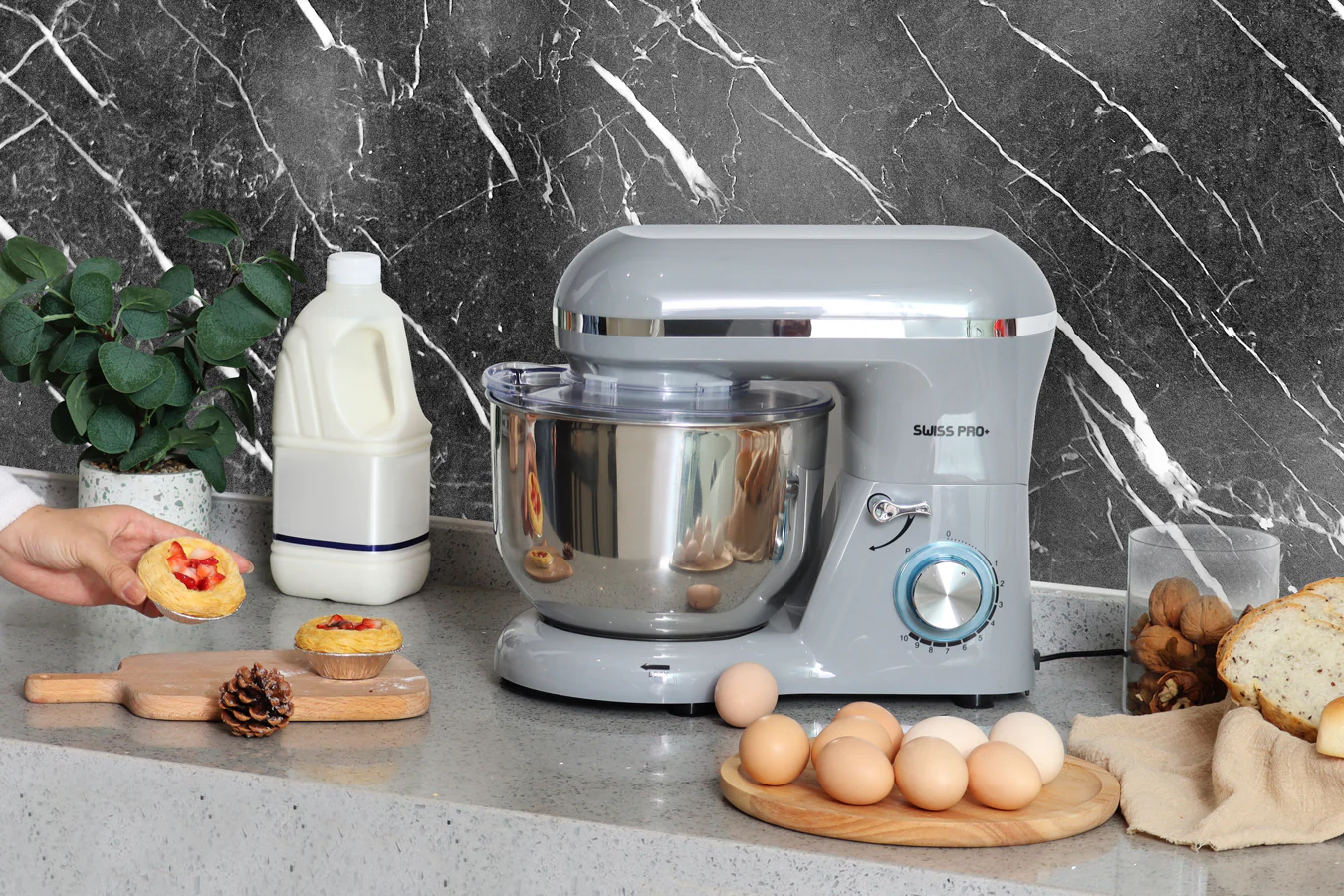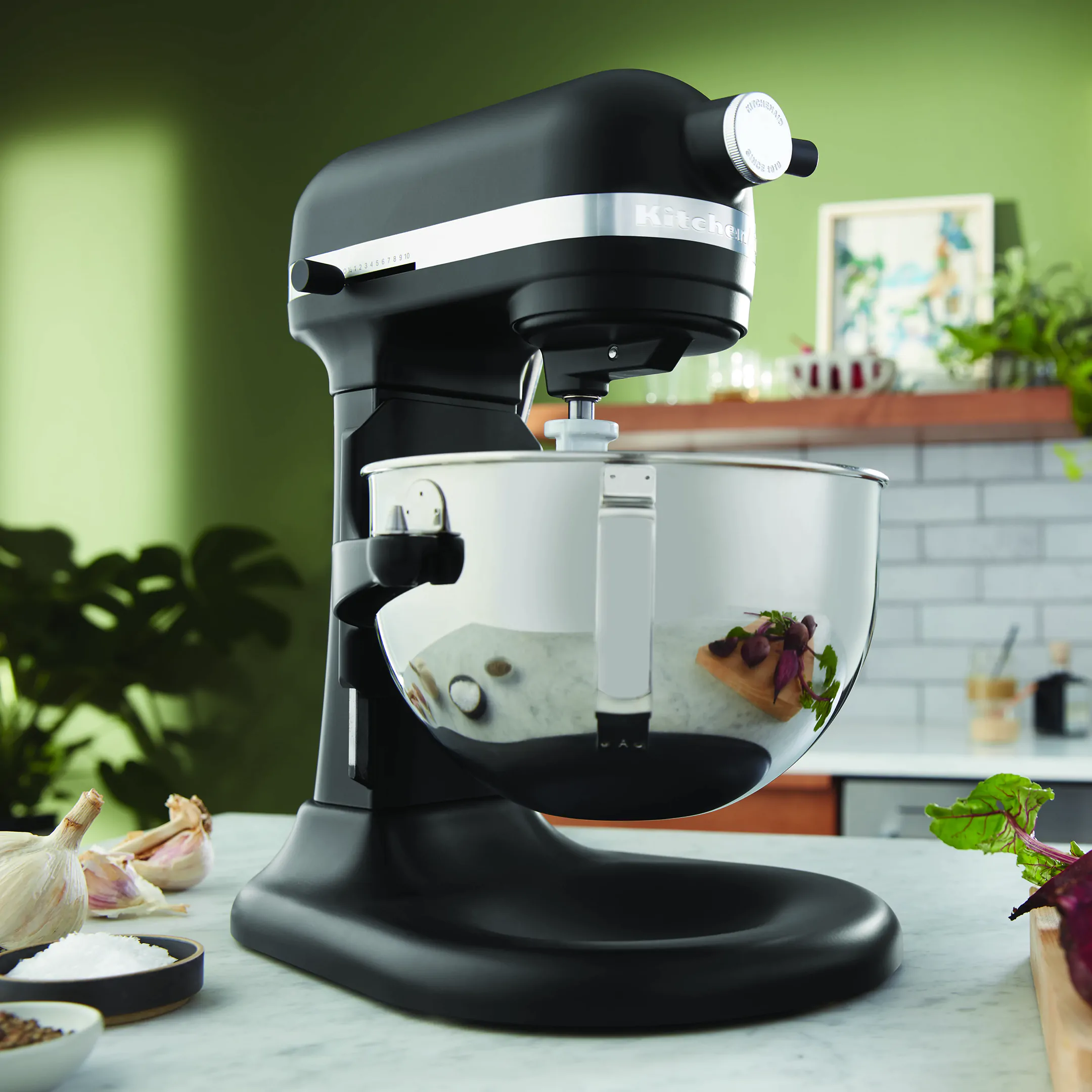Welcome to the heart of the kitchen, the engine room where culinary magic happens. For many, that engine is a stand mixer. But we’re not talking about the machine you pull out twice a year for holiday cookies. We’re here to discuss the real workhorses: the Stand Mixer For Professional Chefs. If you’re ready to move beyond the home baker league and invest in a piece of equipment that can handle punishing, back-to-back tasks without breaking a sweat, you’ve come to the right place. Are you considering an upgrade that will truly elevate your craft? Let’s dive in.
Why Do You Need a Professional-Grade Stand Mixer?
So, what’s the big deal? Can’t any old stand mixer get the job done? The short answer is no. A professional kitchen environment is a different beast altogether. A standard consumer model would be like taking a city car to a Formula 1 race—it simply wasn’t built for that kind of performance or endurance.
A stand mixer for professional chefs is defined by three core principles: power, durability, and capacity.
- Consistent Power: It’s not just about high speeds for whipping cream. It’s about maintaining low-speed torque to knead dense, heavy doughs like sourdough or brioche for extended periods without the motor overheating or straining.
- Unmatched Durability: Think all-metal gear transmissions instead of nylon, robust housing that doesn’t vibrate across the counter, and motors designed for thousands of hours of operation. These machines are built to last a decade, not just a couple of years.
- Serious Capacity: Professional chefs often work in large batches. A 7, 8, or even 20-quart bowl allows for efficiency that a standard 4.5 or 5-quart mixer can’t match.

I remember my first commercial kitchen gig. We were using a consumer-grade mixer, and it died halfway through kneading a double batch of challah dough. That’s a lesson you only need to learn once. The investment in a proper kitchen appliance is an investment in your business and your sanity.
Key Features That Define a Stand Mixer for Professional Chefs
When you’re shopping for a pro-level machine, the spec sheet looks a little different. Let’s break down what really matters.
Motor Power and Type: It’s Not Just About Watts
You’ll see wattage advertised everywhere, but for a professional, it’s a bit of a vanity metric. What you really need to look at is the motor type.
- AC (Alternating Current) Motors: These are common in many consumer models, including some powerful ones. They often boast high wattage (e.g., 575 watts), but can be louder and less efficient at transferring power into torque, especially at lower speeds.
- DC (Direct Current) Motors: This is the gold standard for many high-end and commercial mixers. A DC motor with lower wattage (say, 1.3 horsepower, which is about 970 watts, but some are even lower) can deliver significantly more torque and maintain speed more consistently under heavy loads. Think of it like a diesel truck engine—it’s built for heavy pulling, not just high RPMs. They are also typically quieter and more energy-efficient.
Bowl-Lift vs. Tilt-Head Design
For the home baker, the tilt-head design is convenient. For a professional, it’s often a point of weakness.
- Tilt-Head: The head of the mixer tilts back to access the bowl. While great for smaller kitchens, the hinge mechanism can become a weak point under the stress of heavy, commercial use. It also limits the overall size and capacity of the mixer.
- Bowl-Lift: This is the industry standard for commercial mixers. A lever raises the bowl up to meet the mixing attachment. This design is far more stable, durable, and allows for much larger and heavier bowls. When you’re dealing with 15 pounds of dough, stability is non-negotiable.
Capacity and Build Quality
Size matters. A professional needs a mixer that won’t flinch at large recipes. Look for bowls that are 6 quarts or larger. The material is also critical. A stainless steel bowl is a must for durability and sanitation.
Beyond the bowl, examine the machine’s construction. A stand mixer for professional chefs should have a full metal body to provide weight and stability. Internally, you want all-metal gears. Many consumer models use a sacrificial nylon gear designed to break to protect the motor, but in a professional setting, this just means downtime. Metal gears mean relentless reliability.
According to renowned pastry chef and kitchen consultant John Ackerman, “The moment you stop worrying if your mixer can handle the dough and start focusing purely on the recipe, your baking transforms. That confidence only comes from a machine with a powerful motor and an all-metal, bowl-lift construction.”
Unlocking Potential: Attachments for the Pros
The magic of a stand mixer lies in its versatility, driven by its attachments. While the standard trio—dough hook, flat beater, and wire whip—are essential, professional models offer upgraded versions.
- Spiral Dough Hook: Unlike the standard ‘C’-shaped hook, a spiral hook kneads dough more efficiently by pushing it against the bottom of the bowl. This is ideal for developing gluten in large batches of bread dough without overworking it. It mimics the action of commercial bakery mixers.
- Stainless Steel Attachments: While many mixers come with coated attachments, stainless steel options are a worthwhile upgrade. They are dishwasher safe, incredibly durable, and won’t chip or wear over time, which is crucial for food safety standards.
- Power Hub Versatility: Don’t forget the power hub at the front of the mixer. This allows you to connect a huge range of accessories, from commercial-grade meat grinders and pasta rollers to grain mills. A single motor can power multiple stations in your kitchen, increasing its value exponentially.

Pro Tips for Maintenance and Cleaning Your Mixer
A professional tool requires professional care. Keeping your stand mixer for professional chefs in peak condition ensures it will be a reliable partner for years to come.
- Deep Clean Regularly: Disconnect the power. Use a damp cloth and mild detergent to wipe down the entire body. Pay close attention to the ventilation slots and the area where the bowl locks in place.
- Inspect the Attachments: After every wash, check your attachments for any signs of wear, especially if they are coated. Any chips mean the attachment should be replaced immediately.
- Check the Speed Control: Periodically run the mixer through all its speeds to ensure smooth transitions. Any grinding or hesitation could be an early sign of a problem.
- Listen to Your Machine: You know what your mixer sounds like. If it starts making new, unusual noises—straining, clicking, or grinding—stop using it and have it inspected.
- NSF Certification: For a true commercial kitchen, look for mixers with NSF (National Sanitation Foundation) certification. This means the machine is designed and constructed in a way that promotes food safety and is easy to clean and sanitize.
Quick Comparison of Pro-Level Stand Mixers
| Feature | KitchenAid Commercial Series (e.g., KSMC895) | Hobart N50 | Ankarsrum Original |
|---|---|---|---|
| Motor Type | DC Motor (1.3 HP) | AC Motor (Fixed Gear) | DC Motor (600W) |
| Design | Bowl-Lift | Bowl-Lift | Overhead Motor |
| Capacity | 8 Quarts | 5 Quarts | 7.4 Quarts (7L) |
| Build | All-Metal, NSF Certified | All-Metal, NSF Certified | Steel and Chrome |
| Best For | High-volume bakeries, restaurants | Small restaurants, labs, durability | Artisan bread, heavy doughs |
| Key Feature | Power and capacity | Legendary durability | Unique roller & scraper design |
Frequently Asked Questions (FAQ)
Here are some common questions we get from chefs and serious home bakers looking to upgrade.
What does NSF certification mean for a stand mixer?
NSF certification ensures the mixer is designed for commercial use, meeting strict standards for public health protection. This includes being made from safe materials, being easy to clean and sanitize, and resisting wear and tear that could compromise food safety.
Is a more powerful motor always better for a stand mixer?
Not necessarily. It’s more about torque and efficiency. A well-engineered DC motor can deliver more effective kneading power with lower wattage than a less efficient AC motor. Focus on the motor type and overall build quality, not just the wattage number.
Can a stand mixer for professional chefs handle small batches too?
Yes, most can, but they might not be as efficient. The large bowl and beaters may struggle to properly incorporate very small quantities. Some brands offer smaller, compatible bowls and attachments for greater versatility.
How often should a commercial stand mixer be serviced?
For a machine in daily, heavy use, professional servicing once a year is a good rule of thumb. This can involve checking the gears, re-greasing the transmission, and ensuring the motor is running optimally. This preventative maintenance can save you from costly downtime.
Is a Hobart mixer worth the high price tag?
Hobart is the original benchmark for commercial mixers, known for being practically indestructible. While expensive, their longevity is legendary. For a demanding restaurant or bakery, it’s often considered a lifetime investment that pays for itself in reliability.
Your Ultimate Kitchen Partner Awaits
Choosing a stand mixer for professional chefs is about more than just buying an appliance; it’s about investing in a cornerstone for your culinary creations. It’s a commitment to efficiency, consistency, and quality. From the robust power of a DC motor to the unshakeable stability of a bowl-lift design, every feature is engineered to perform under pressure. This is the tool that empowers you to scale up recipes, tackle the toughest doughs, and operate with the confidence that your equipment will never be the weakest link in your creative chain.
Have you made the leap to a professional stand mixer? Share your experiences or ask any questions in the comments below. We’d love to hear how it transformed your workflow.
One thought on “Choosing the Best Stand Mixer for Professional Chefs”